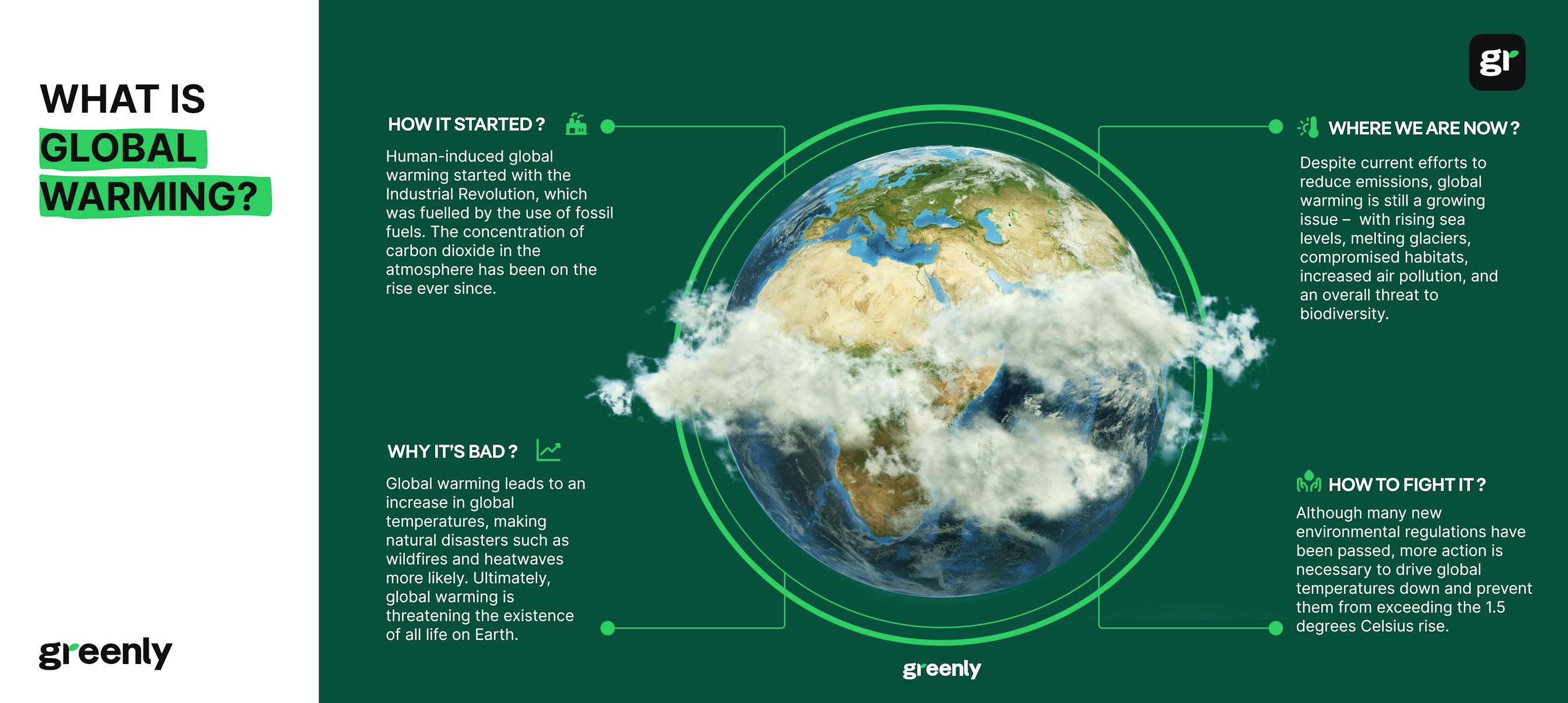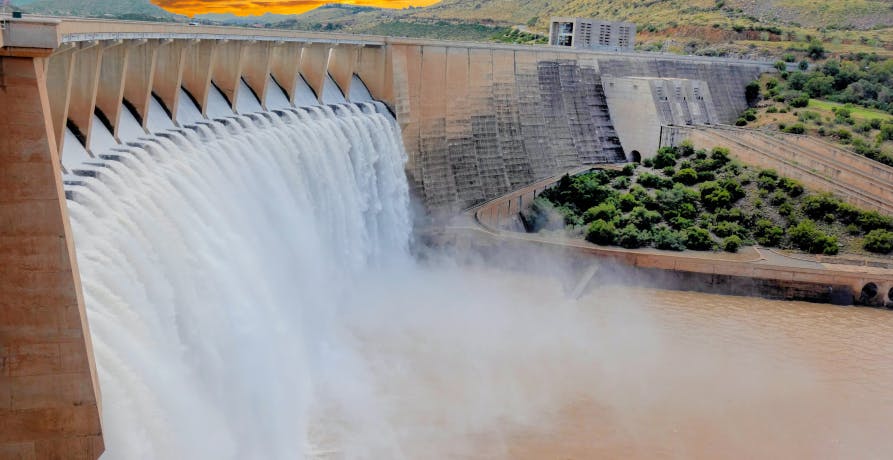
Sustainable Development Goals (SDGs): All You Need to Know
The United Nations has defined 17 goals, aimed at creating a better world. What are these so-called "Sustainable Development Goals" ? Explanations.
ESG / CSR
Industries



Drought isn’t just a local issue - it ripples through entire economies, disrupting livelihoods and industries on a massive scale. From agriculture and energy production to tourism and leisure, the effects are felt far beyond the hardest-hit regions. As droughts become more frequent and severe due to global warming, businesses, governments, and communities are being pushed to adapt to a new, harsher reality.
👉 In this article, we’ll dive into the economic toll of drought across key sectors and explore what can be done to lessen the damage.
Each year, over 55 million people are affected by drought, and nearly 40% of the global population faces water scarcity. Drought poses a grave threat to livestock, crops, and the livelihoods of millions worldwide. Beyond economic devastation, drought heightens the risk of disease outbreaks and can even drive mass migration.
However, drought is a multifaceted phenomenon that can manifest in different ways depending on the environmental context. It’s important to understand the different types of drought, as each has unique impacts:
Meteorological droughts refer to a prolonged period of below-average precipitation. This is the most common type and often serves as the precursor to other forms of drought. It’s caused by shifts in weather patterns, which can be influenced by both natural variability and human-induced climate change. Meteorological drought can increase wildfire risks and disrupt water supplies, especially in regions already vulnerable to dry conditions.
Agricultural drought occurs when insufficient moisture in the soil prevents healthy crop growth and reduces livestock productivity. Even with mild rainfall shortages, agriculture can suffer greatly, threatening food security and driving up food prices globally. Extended agricultural drought can degrade soil health, making future recovery more difficult and jeopardizing entire growing seasons.
Hydrological drought refers to water shortages in lakes, rivers, reservoirs, and groundwater supplies, often as a result of prolonged rainfall deficits. This type of drought impacts drinking water, industrial uses, irrigation, and energy production, particularly in areas reliant on hydropower. Hydrological drought can have long-lasting effects, as water systems may take years to recover even after normal precipitation resumes.
Ecological droughts highlight the disruption of ecosystems due to water scarcity. Reduced water availability stresses plants, animals, and entire ecosystems, leading to habitat degradation, species decline, and even extinction. This can have cascading effects on biodiversity, food webs, and the resilience of natural landscapes.


Drought events are not a new phenomenon, but their frequency, intensity, and duration are becoming more severe as a direct result of climate change. As global temperatures rise and weather patterns shift, the natural water cycle is being disrupted in ways that are making severe droughts more common and more devastating.
At its core, drought is the result of an imbalance in the water cycle - when evaporation exceeds precipitation over an extended period. Climate change worsens this imbalance by influencing several key factors:
The impacts of climate change-induced drought are not felt equally around the world - particularly when it comes to agricultural and ecological drought. Certain regions are more vulnerable to drought stress due to their geographic location and existing environmental stressors:
As droughts become more severe and widespread due to climate change, their economic and social impacts are deepening. Droughts not only reduce crop yields and increase food prices, but they also lead to higher energy costs, particularly in regions dependent on hydropower. Livestock losses, soil degradation, and disruptions to supply chains compound these economic challenges, threatening global food security.
On a social level, drought can displace communities, as people are forced to migrate in search of water and arable land. This can lead to increased conflict over dwindling resources, particularly in vulnerable regions already facing political instability.
Worryingly, as global temperatures continue to rise, droughts will become an increasingly dominant feature of the global climate landscape. The link between drought and climate change makes it clear that addressing drought is not just about managing water scarcity - it’s about tackling the root cause of these changes: greenhouse gas emissions.
Governments, organizations, and individuals must take immediate action to reduce emissions, adapt to the changing climate, and implement sustainable water management strategies. This includes investments in water-saving technologies, improved agricultural practices, and resilient infrastructure that can withstand the pressures of a hotter, drier world. Only by addressing the underlying causes of climate change can we hope to mitigate the most catastrophic effects of drought and protect the future of global water security.
As climate change accelerates, drought is becoming more frequent - and its effects are felt far beyond the immediately affected areas. The economic impact of drought can ripple across industries, influencing global markets and even raising the cost of everyday products and energy for consumers. A recent World Bank report highlighted the alarming potential of drought and water scarcity to slow economic growth, drive migration, and, in extreme cases, spark conflict. Yet, the report also emphasizes that effective water management can help mitigate these severe consequences.
Before diving into the specific sectors affected by drought and the steps countries can take to manage water scarcity, let’s look at the scale of the problem. The World Bank’s ‘High and Dry’ report reveals several key findings:
The World Bank also concluded that effective water management is crucial for achieving the UN's Sustainable Development Goals, reducing poverty, and promoting shared prosperity. By implementing smart water policies, countries can prevent many of the most devastating consequences of water scarcity and drought.

Droughts are detrimental to the economy, but some sectors bear the brunt more than others - particularly agriculture, energy, tourism, and infrastructure. Let’s take a closer look at how these industries are affected and the ripple effects they create.
Unsurprisingly, the agricultural sector is one of the hardest hit by drought. In fact, studies show that agriculture accounts for nearly half of all economic losses linked to drought. The reason is clear: crops need water to grow, and when water is scarce, so too are harvests. Even short-term droughts can have devastating effects if they occur during critical stages of crop development, such as planting or flowering.
Certain crops are more vulnerable to drought than others. Fruits, vegetables, tree nuts, and medicinal herbs are particularly sensitive to dry conditions, which means these crops carry a higher risk of economic loss. When crops fail, the financial impact on farmers is immediate, with lost income and reduced yields. But the consequences don’t stop there. A drop in the supply of key crops can lead to higher prices for consumers, both locally and globally.
Take the 2012 California drought, for example. The state’s agricultural output was severely reduced, causing a ripple effect on prices across North America. In Canada, the price of lettuce - 70% of which was sourced from California - rose by 40%, affecting consumers far from the original drought zone.
Livestock farming is also particularly vulnerable to drought. When water is scarce, grazing land deteriorates, and the cost of feed rises. In response, many farmers are forced to sell off or slaughter a larger portion of their herds, temporarily flooding the market with surplus meat. While this may initially drive meat prices down, prolonged drought conditions ultimately lead to higher costs as livestock numbers dwindle.
Drought also poses a significant challenge to energy production, particularly hydropower and thermal energy plants. Hydropower, which relies on consistent water flow to generate electricity, can be severely impacted when water levels drop - even in times of moderate drought. Similarly, thermal power plants, which use water to cool processes, may struggle to function without adequate water supplies.
When hydropower plants can’t operate at full capacity, countries often turn to alternative energy sources - typically fossil fuels - to make up the shortfall. This shift not only leads to higher carbon emissions but also increases energy prices. For example, during California’s severe drought in 2001, reduced hydropower generation resulted in a sharp rise in electricity prices, with the economic impact estimated between $2.5 billion and $6 billion.
Another striking example comes from China’s 2022 drought, which significantly impacted the country’s hydropower output. The Yangtze River, one of the world's largest and a crucial waterway for China's hydropower, saw its water levels drop to record lows. This drought forced Sichuan province, which generates more than 80% of its energy from hydropower, to reduce or suspend power supply to thousands of factories, including major companies like Toyota, Foxconn, and Tesla. The drought caused a 25% increase in electricity demand as people tried to cool themselves during a scorching heatwave, further stressing the grid.
The implications of this hydropower shortage were far-reaching. Along with factory suspensions, shipping routes on the Yangtze River, vital for China’s economy and global supply chains, were also closed as parts of the river dried up. The lack of water for power generation prompted local governments to discharge water from reservoirs in an attempt to restore water flow, but the crisis underscored the vulnerability of hydropower-dependent regions to extreme weather events like drought.
The drought in China also illustrated the delicate balance between climate commitments and economic demands. As hydropower supplies dwindled, the Chinese government announced increased support for coal-fired power production to meet energy shortfalls, highlighting the challenges of maintaining low-carbon energy policies during periods of extreme drought.
These examples from both California and China demonstrate the critical need for effective water and energy management strategies to mitigate the risks posed by drought. As global temperatures rise and droughts become more frequent, the energy sector's vulnerability to water shortages will likely continue to grow, complicating efforts to reduce carbon emissions and meet climate goals.
The tourism and leisure industries also face significant challenges during periods of drought, especially businesses that rely on water-based activities like boating, rafting, canoeing, and fishing. When water levels drop, these activities may become impossible, leading to a decline in visitor numbers, booking cancellations, and lost income for businesses.
The impact extends beyond water-based activities. Waterfront hotels, restaurants, and shops that depend on tourism for their livelihood can experience financial hardship as fewer visitors are drawn to drought-affected areas. In extreme cases, entire tourism seasons can be wiped out, affecting local economies that are heavily reliant on tourists' money.
The consequences of drought on tourism can also affect international travel, as travelers may choose to avoid regions experiencing extreme dry conditions, further compounding the financial toll on local communities.
For example, Sicily, a popular tourist destination in Italy, has been severely impacted by drought in recent years, leading to widespread water shortages. In 2024, hotels and small guesthouses in areas like Agrigento were forced to turn tourists away because they could not guarantee basic amenities like flushing toilets or showers due to the water crisis. Water restrictions, aging infrastructure, and limited rainfall left over 1 million residents in Sicily rationing water, and the effects on tourism were profound. Businesses struggled to meet tourist demands, and some potential visitors rebooked in other areas of the island less affected by the drought.
The ripple effects of drought, like those seen in Sicily, threaten not only the local tourism economy but also the long-term reputation of drought-affected regions as desirable tourist destinations. Without immediate solutions, such as better water management or infrastructural improvements, these areas risk significant and sustained economic loss.
Drought doesn’t just affect industries - it can also cause significant damage to infrastructure. When the ground dries out and loses moisture, it can shrink, a process known as subsidence. This can lead to cracks in roads, foundations, and buildings, as well as damage to water pipes and other underground structures. The economic cost of repairing and replacing damaged infrastructure can be substantial, placing additional strain on both local and national economies.
Drought can also disrupt transportation networks, particularly water-based shipping routes. When rivers and canals dry up or their water levels fall, ships may find it difficult to navigate, forcing businesses to seek alternative - and often more expensive - modes of transportation. In some cases, these alternatives are more carbon-intensive, contributing to higher emissions and exacerbating the very climate change that fuels drought in the first place.
A prime example of this is the Panama Canal, an essential global shipping route. The Panama Canal depends on large amounts of fresh water to operate its lock system, which allows ships to transit between the Atlantic and Pacific Oceans. However, ongoing droughts, worsened by climate change and periodic El Niño events, have drastically reduced water levels in the canal’s reservoirs. In October 2023, for example, the canal saw its driest October on record, forcing the Panama Canal Authority (ACP) to reduce the number of daily transits from an average of 36 to just 22. This has led to significant economic repercussions, as ships were forced to wait longer to cross or pay hefty fees to secure quicker transit slots - some ships paid as much as $2.4 million!
Additionally, the canal has imposed draft restrictions, limiting how deep ships can sit in the water as they pass through. These restrictions mean vessels must either carry lighter loads or unload some cargo before transit, significantly reducing efficiency and profitability for shipping companies. The knock-on effect is increased costs for businesses and consumers globally, as the price of goods transported through the canal rises due to delays and logistical challenges.
The Panama Canal’s struggles highlight how drought-induced infrastructure challenges can have wide-reaching economic consequences. As global temperatures rise and water becomes scarcer, critical infrastructure like the canal will face increasing pressure, demonstrating the need for proactive water management and climate adaptation strategies.
Thankfully, there are a wide range of adaptation measures available to mitigate the worst effects of drought. These measures aim to improve the resilience of drought-sensitive sectors, from agriculture to energy production, and include innovations such as drought-resistant crops, advanced power station cooling techniques, diversified livelihoods, and early warning systems.
Let’s explore some of these adaptation strategies in more detail:
Addressing drought on a global scale requires the cooperation of international organisations, governments, and local communities. Organisations like the Food and Agriculture Organization (FAO), the United Nations Convention to Combat Desertification (UNCCD), and the World Meteorological Organization (WMO) are leading the charge in global drought management.
The FAO works to improve agricultural resilience by promoting drought-resistant crops, efficient irrigation practices, and early warning systems that allow countries to better prepare for drought conditions. Similarly, the UNCCD focuses on combating land degradation and desertification, offering strategies to protect ecosystems from the impacts of prolonged drought, while the WMO provides vital climate data and monitoring systems to predict and manage water shortages.
These efforts are complemented by partnerships with local governments and NGOs, helping to ensure that communities worldwide are equipped with the tools and knowledge needed to manage drought effectively. Through collaborative efforts, these organizations are helping to reduce the global risks posed by severe droughts, protect vulnerable ecosystems, and enhance water resource management.

While governments and local authorities play a key role in managing water resources, individuals also have the power to make a significant impact by adopting water-saving practices. These small changes can add up, particularly during times of drought, and are equally beneficial for conserving water even when supplies aren’t limited.
Here are some actionable steps individuals can take to cut down on water waste:
| Tip | Description |
|---|---|
| Install Low-Flow Fixtures | Save over 100,000 liters annually in a household of four by installing low-flow toilets, showerheads, and faucets. |
| Turn Off the Tap | Save 6 liters of water per minute by turning off the tap while brushing your teeth, shaving, or washing your face. |
| Don't Use the Toilet as a Trash Bin | Avoid wasting 6 to 26 liters per flush by using the toilet only for its intended purpose. |
| Fix Leaks Promptly | A small drip can waste up to 19 liters of water per day, so fix leaks as soon as possible. |
| Use Dishes Efficiently | Reduce water use by avoiding unnecessary washing and only run the dishwasher when it's full. |
| Take Shorter Showers and Avoid Baths | Cut shower times to under 5 minutes to save water, as showers use 7 to 10 liters per minute. Avoid baths, which use more water. |
| Run Full Loads in Washing Machines and Dishwashers | Maximize efficiency by running washing machines and dishwashers only when fully loaded. |

As the planet continues to warm, droughts and water shortages are expected to become more frequent and severe, affecting regions far beyond the immediate areas hit hardest by drought. The ripple effects of these changes will disrupt global supply chains, drive up the costs of essential commodities like food and energy, and potentially exacerbate socio-economic inequalities. The interconnectedness of our global economy means that a drought in one part of the world can have far-reaching consequences, influencing everything from market stability to migration patterns.
The economic impacts are profound. With water being a critical input for agriculture and energy production, shortages will inevitably lead to price spikes in both sectors, putting additional pressure on households, businesses, and governments. These disruptions will challenge existing systems, particularly in areas already struggling with resource scarcity.
However, while the future may seem daunting, it’s important to remember that mitigation is possible. Proactive planning, the adoption of innovative water management technologies, and policy shifts can help soften the blow. Governments can invest in infrastructure and regulatory reforms, while individuals can play a role by adopting water-saving practices and pushing for broader environmental action. Together, these steps offer a path toward greater resilience, ensuring that while the threat of drought is real, it doesn’t have to lead to crisis.
As droughts become more frequent and severe due to climate change, the need for businesses to adapt is more pressing than ever. While water scarcity poses its own set of challenges, it’s crucial to remember that the root cause - climate change - is driving many of these extreme weather events. That’s where Greenly steps in. At Greenly, we specialize in helping companies measure, manage, and reduce their carbon emissions, directly addressing the climate crisis and its wide-ranging impacts, including drought.
Greenly equips businesses with advanced tools to track, analyze, and reduce their greenhouse gas emissions, ensuring alignment with global sustainability standards. By mitigating carbon emissions, companies can help slow the pace of climate change and reduce the frequency of extreme weather events like drought.
Many of the industries most vulnerable to drought also have complex, carbon-intensive supply chains. Greenly can assist with supply chain decarbonization, helping companies engage with their suppliers to transition toward lower-carbon alternatives. This proactive approach not only reduces emissions but also strengthens the resilience of your supply chain in the face of climate-related disruptions.
Greenly’s intuitive platform helps companies navigate the often-complex process of managing emissions and monitoring environmental impacts. Whether you're looking to track progress against carbon reduction goals or streamline your reporting processes, our platform makes sustainability accessible and actionable for businesses of all sizes.
Greenly offers end-to-end support for businesses aiming to reduce their carbon footprint and tackle the challenges of climate change head-on. By partnering with us, your company can become a leader in sustainability, positioning itself to thrive in a low-carbon economy while contributing to the global effort to mitigate climate risks like drought.
Take the first step toward a more sustainable future with Greenly today.
